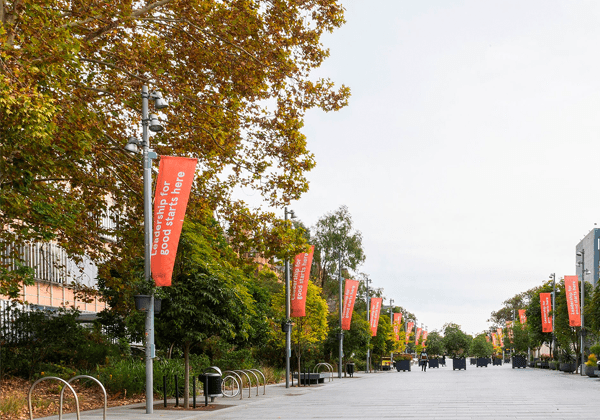As universities continue to move towards ‘digital campuses,’ students have had to adapt to a new learning environment of Zoom seminars, breakout room discussions and take-home assessments.
But there’s one area of study that isn’t quite as suited to online learning — languages.
Having had little to no opportunities for face-to-face learning since the onset of COVID-19, language students at the University of Sydney say their education has taken a turn for the worse.
Katie, who is President of the French Society and in her third year, feels that her speaking skills have declined since moving online.
“It’s hard enough to speak a language you’re not proficient in,” she says. “The screen just adds another layer of distance.”
Because students aren’t in a classroom, speaking or writing French in real time, Katie says there’s less incentive to practice.
“You can easily just redo your answer, look at a dictionary or even use a translating app. It’s easier to get good marks, but there’s no pressure to actually learn.”
She also says that online learning is particularly disappointing because there have been adjacent cuts to cultural subjects and she can’t go on exchange — an important step in the road to fluency.
“It all just piles up and makes me consider whether doing a language major was the right thing to do.”
For students like Adam, a second year Korean major, online classes have meant that a lot more extra study is needed just to keep up.
“Speaking is such an essential component of learning a language,” Adam says. But on Zoom, students miss vital opportunities to engage in proper conversations with classmates.
“Other students aren’t really participating because you can just hide behind the camera. It feels so detached.”
He also finds it difficult to speak in class because of internet lag, poor audio quality, and the less organic form of communication.
“I pretty much have to do everything myself, which is really frustrating and difficult.”
In some subjects, timetabling cuts have caused class numbers to skyrocket. Alex, another language major, says that some of their classes have doubled to almost 30 students.
“It’s very hard to stay focused. The teachers do their best, but it’s impossible to have conversations with everyone when there are that many people.”
And it isn’t just students having trouble online — Dr Carolyn Stott, Senior Lecturer in the Department of French and Francophone Studies, says she finds it much harder to teach in front of blacked out screens.
“It’s difficult to read a room, understand what a student is saying or correct their accent if you don’t see how their mouth is moving.”
While her department has found ways to adapt, she says her colleagues are keen to offer face-to-face learning opportunities to students once again.
Currently, the University says they are “looking into the possibility” of offering more campus classes next semester. But in the meantime, people within the languages departments have taken it upon themselves to provide necessary educational support.
Students have praised staff for reaching out and adjusting their classes according to feedback.
Language societies like FrenchSoc, the Italian Society and the Spanish and Latin American Society organise conversation groups on campus, where students can come in, have a coffee and practice speaking.
“It’s been really good to see people coming in helping each other improve their language skills,” Katie says. She hopes that before she graduates, she’ll get to be back in the classroom at least one more time.
If you’d like to share your experiences in your department, please email us at editors@honisoit.com.





